The world’s top carnivores are in big trouble: this is the take-away message from a new review paper published today in Science. Looking at 31 large-bodied carnivore species (i.e those over 15 kilograms or 33 pounds), the researchers found that 77 percent are in decline and more than half have seen their historical ranges decline by over 50 percent. In fact, the major study comes just days after new research found that the genetically-unique West African lion is down to just 250 breeding adults.
“Globally, we are losing our large carnivores,” says lead author of the study, William Ripple, with Oregon State University. “Many of them are endangered. Their ranges are collapsing. Many of these animals are at risk of extinction, either locally or globally. And, ironically, they are vanishing just as we are learning about their important ecological effects.”
The story of the world’s large carnivores is a largely bleak one. In the not so distant past, most people—even scientists—largely viewed large carnivores as competitors, pests, and deadly threats. Such views led to conflict and even extermination campaigns that killed-off many of the world’s top predators in Europe, North America, the Middle East, and North Africa, and decimated populations elsewhere. In fact, the study finds that 66 percent of the 31 biggest carnivores are currently listed as threatened on the IUCN Red List.
 The leopard has lost 35 percent of its historical range and is decreasing. Photo by: Kirstin Abley. |
“These carnivores often require large prey and expansive habitats,” write the scientists. “It is these food requirements and wide-ranging behavior that often bring them into conflict with humans and livestock. This, in addition to human intolerance, renders them vulnerable to extinction.”
In many parts of the world, top predators are still shot, trapped, poisoned, or even speared. Even where they are not directly targeted, big predators are rapidly losing both their habitat and their prey base, leading to a trend of vanishing top predators even in protected areas.
According to the study, the major trend underpinning this global decline in big predators is the rapidly-rising population of another predator: humans.
“An increasing human population and subsequent rate of urbanization inevitably means many habitats will be further reduced or modified. This will place top predators at increased risk of extinction,” co-author Euan Ritchie with Deakin University in Australia told mongabay.com., adding that “the issue of an increasing human population poses challenges well beyond just maintaining top predators in the environment. How we are going to produce enough food while still maintaining the biodiversity we are so dependent upon is arguably society’s greatest challenge.”
However, even as most big-bodied predators continue to decline, popular views of these megafauna are slowly shifting. Large-bodied predators now have many conservation champions, and elucidate passionate responses from advocates. These animals are also often seen as key symbols for global conservation efforts, and in some parts of the world (notably the U.S. and Europe) a few big predators are staging mini-comebacks. But perhaps, more importantly, scientists are just beginning to understand the outsized role of big carnivores in the world’s ecosystems.

Sea otters play a major role in the health of kelp forests. Photo by: Norman S. Smith.
“There is now overwhelming evidence from around the world that we are better off with top predators in the environment because of the many important roles they perform, such as reducing overgrazing of vegetation by herbivores which increases the carbon sequestration capabilities of habitats and in turn assists with ameliorating the impacts of climate change,” says Ritchie.
In fact, scientists have long theorized that big predators exert a powerful ecological influence on the foodchain by keeping herbivore populations low, but now they are discovering additional avenues in which big carnivores impact ecosystems. For one thing, top predators also keep mesopredators (medium-sized predators) in check via harassment, intimidation, and sometimes downright killing. Losing big predators can mean a sudden explosion of mesopredator abundance, impacting species all down the line. For example, Australia has built a massive fence that keeps the dingoes (Canis lupus dingo) out of sheep grazing areas. However, in these same areas, red fox—an invasive predator—runs amuck, leading to increased pressure on native mammals.
“Overall, the suppression of dingoes has probably contributed to the endangerment and extinction of small marsupials and rodents over much of the continent,” the scientists write.
The unmistakable importance of predators is not regulated to the land alone. Research has shown that sea otters (Enhydra lutris) exert a huge influence on their environment by keeping urchin populations in control. When sea otters are killed off, sea urchin populations explode, decimating kelp forests. The researchers write that sea otters “[enhance] the abundance and distribution of kelp and other fleshy macroalgae in coastal inshore ecosystems.”

Gray wolf in Yellowstone National Park: the top predators were reintroduced into the park after a 70 year absence. Photo by: Doug McLaughlin.
Probably the most famous example of the importance of top predators comes from Yellowstone National Park. The reintroduction of wolves into the park in the 1990s has had massive impacts on the ecosystem. With the return of the wolves, elk behavior changed significantly: instead of browsing out in the open, they took to the forests for protection. This allowed trees to grow unimpeded in many parts of the park where they had been overgrazed for decades, including along river and stream beds. The impacts spread to songbirds, beavers, fish, overall biodiversity and even carbon sequestration. In a roundabout way, wolves became the true aborists of Yellowstone.
 The American black bear is the world’s only bear species whose population is on the rise. Photo by: Public Domain. |
“I am impressed with how resilient the Yellowstone ecosystem is. It isn’t happening quickly everywhere, but in some places, ecosystem restoration has started there,” says Ripple. “Nature is highly interconnected. The work at Yellowstone and other places shows how one species affects another and another through different pathways. It’s humbling as a scientist to see the interconnectedness of nature.”
Given this changing understanding of predator importance, Ritchie says many of the world’s governments are woefully mismanaging their predator populations.
“In the case of wolves in North America and dingoes in Australia, their lethal control often fractures social structures leading to more not less wolves and dingoes and often increased not decreased attacks on livestock,” says Ritchie, who argues that policies of culling predators “potentially [exacerbate]” human conflict with predators” and undercut ecosystem services.
“Governments should instead promote policies and actions such as using guardian animals for protecting livestock, as this will lead to improved and sustained environmental and economic outcomes,” he adds.

Dingo on Fraser Island. Photo by: Sam Fraser-Smith/Creative Commons 2.0.
But how many predators are needed to fulfill their ecological role? In many cases, scientists aren’t wholly certain, but Ritchie says the answer is actually more complex than a simple number.
“It’s not just how many predators there are but the age and sex of individuals is important. When predator populations are greatly reduced and interfered with through lethal control, relationships between individuals breakdown and predators can behave in unexpected and sometimes very negative ways,” he notes. In many predatory species, infants and adolescents learn from older individuals. When mature individuals are killed-off, young predators are left without their mentors, often leading to more erratic behavior and posing a higher risk both to livestock and people.
Despite growing knowledge about the importance of top predators, the ecological role of most of the world’s large-bodied predators remains unknown. Perhaps more alarming still, scientists lack good data on the population sizes of many of the world’s top predators, leaving conservationists guessing. But where information is available: it is disheartening. Lion populations have fallen from an estimated 100,000 in 1960 to 15,000-35,000 today. There are currently more captive tigers in the U.S. alone than there are tigers in the wild worldwide (about 3,200). The Ethiopian wolf (Canis simensis) has lost 98 percent of its historical range and sports a total population of less than 500.
Not all the news is bleak: wolves are returning to long-lost habitats in the U.S. and Western Europe, conservationists have launched a massive campaign to double tiger numbers in the wild by 2022, and the world’s rarest big predator—the red wolf (Canis rufus)—is bouncing back after once being thought totally extinct. However, the bad news—and the relentless pressures—very much outweighs the good for the world’s big predators.
“Promoting tolerance and coexistence with large carnivores is a crucial societal challenge that will ultimately determine
the fate of Earth’s largest carnivores and all that depends upon them, including humans,” the scientists conclude.

The dingo fence is one of the longest structure on the planet, stretching for 5,614 kilometers (3,488 miles). Photo by: Creative Commons 3.0.

Wolves killed in Russia. In much of the world, governments still practice massive culling measures to manage carnivores. Photo by: www.volganet.ru.

The Javan tiger, a distinct subspecies, went extinct in the 1970s. Photo by: Public Domain.
Citations:
- W.J. Ripple, R.L. Beschta, M.P. Nelson, et al. Status and Ecological Effects of the World’s Largest Carnivores. Science (2014) Vol 334.
Related articles
Lions face extinction in West Africa: less than 250 survive
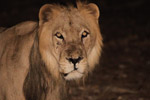
(01/08/2014) The lions of West Africa, which may represent a distinct subspecies, are on the precipice of extinction. A sober new study in PLOS ONE reports that less than 250 mature lions survive in the region. Scientists have long known that West Africa’s lions were in trouble, but no one expected the situation to be as dire as it was. In fact, in 2012 scientists estimated the population at over 500. But looking at 21 parks, scientists were shocked to find lions persisted in just four with only one population containing more than 50 individuals.
Protecting predators in the wildest landscape you’ve never heard of
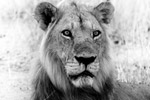
(09/10/2013) The Serengeti, the Congo, the Okavango Delta: many of Africa’s great wildernesses are household names, however on a continent that never fails to surprise remain vast wild lands practically unknown to the global public. One of these is the Ruaha landscape: covering 51,800 square kilometers (20,000 square miles) of southern Tanzania’s woodlands and savannah, Ruaha contains the largest population of elephants in East Africa, over 500 bird species, and a wealth of iconic top predators, including cheetah, hyena, wild dogs, leopard, and—the jewel in its crown—10 percent of the world’s lions. But that’s not all, one of Africa’s least-known and secretive tribal groups, the Barabaig, also calls Ruaha home.
Featured video: how tigers could save human civilization
(08/29/2013) In the video below, John Vaillant, author of the The Tiger: A True Story of Vengeance and Survival, tells an audience at TEDxYYC about the similarities between tigers and human beings. Given these similarities—big mammals, apex predator, highly adaptable, intelligent, and stunningly ‘superior’—John Vaillant asks an illuminating question: what can we learn from the tiger? It turns out learning from tigers could help conserve the human race.
(07/30/2013) Nearly two hundred tigers roam the lowland forests of Nepal, according to a new survey. This is a 63 percent increase in the country’s tiger population since 2009, and rare good news for global efforts to save the tiger from extinction.
Conserving top predators results in less CO2 in the air

(06/19/2013) What does a wolf in Yellowstone National Park have in common with an ambush spider on a meadow in Connecticut? Both are predators and thus eat herbivores, such as elk (in the case of wolves) and grasshoppers (in the case of spiders). Elk and grasshoppers also have more in common than you probably imagine: they both consume large quantities of plant matter. While scientists have long-known that predators lead to carbon storage by reducing herbivore populations, a new study reveals a novel way in which top predators cause an ecosystem to store more carbon.
Tibetan monks partner with conservationists to protect the snow leopard
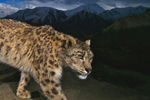
(06/10/2013) Tibetan monks could be the key to safeguarding the snow leopard (Panthera uncia) from extinction, according to an innovative program by big cat NGO Panthera which is partnering with Buddhist monasteries deep in leopard territory. Listed as Endangered by the IUCN Red List, snow leopard populations have dropped by a fifth in the last 16 years or so. Large, beautiful, and almost never-seen, snow leopards are the apex predators of the high plateaus and mountains of central Asia, but their survival like so many big predators is in jeopardy.
Scientists capture one of the world’s rarest big cats on film (photos)
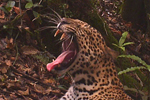
(05/21/2013) Less than a hundred kilometers from the bustling metropolis of Jakarta, scientists have captured incredible photos of one of the world’s most endangered big cats: the Javan leopard (Panthera pardus melas). Taken by a research project in Gunung Halimun-Salak National Park, the photos show the magnificent animal relaxing in dense primary rainforest. Scientists believe that fewer than 250 mature Javan leopard survive, and the population may be down to 100.
Could the Tasmanian tiger be hiding out in New Guinea?

(05/20/2013) Many people still believe the Tasmanian tiger (Thylacinus cynocephalus) survives in the wilds of Tasmania, even though the species was declared extinct over eighty years ago. Sightings and reports of the elusive carnivorous marsupial, which was the top predator on the island, pop-up almost as frequently as those of Bigfoot in North America, but to date no definitive evidence has emerged of its survival. Yet, a noted cryptozoologist (one who searches for hidden animals), Dr. Karl Shuker, wrote recently that tiger hunters should perhaps turn their attention to a different island: New Guinea.
Crazy cat numbers: unusually high jaguar densities discovered in the Amazon rainforest
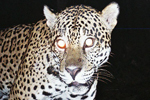
(05/16/2013) Jaguars (Panthera onca) are the biggest cat in the Americas and the only member of the Panthera genus in the New World; an animal most people recognize, the jaguar is also the third largest cat in the world with an intoxicatingly dangerous beauty. The feline ranges from the harsh deserts of southern Arizona to the lush rainforests of Central America, and from the Pantanal wetlands all the way down to northern Argentina. These mega-predators stalk prey quietly through the grasses of Venezuelan savannas, prowl the Atlantic forests of eastern Brazil, hunt along the river of the Amazon, and even venture into lower parts of the Andes.
Endangered primates and cats may be hiding out in swamps and mangrove forests

(05/02/2013) What happens to animals when their forest is cut down? If they can, they migrate to different forests. But in an age when forests are falling far and fast, many species may have to shift to entirely different environments. A new paper in Folia Primatologica theorizes that some 60 primate species and 20 wild cat species in Asia and Africa may be relying more on less-impacted environments such as swamp forests, mangroves, and peat forests.
13 year search for Taiwan’s top predator comes up empty-handed
(05/01/2013) After 13 years of searching for the Formosan clouded leopard (Neofelis nebulosa brachyura), once hopeful scientists say they believe the cat is likely extinct. For more than a decade scientists set up over 1,500 camera traps and scent traps in the mountains of Taiwan where they believed the cat may still be hiding out, only to find nothing.
Obama Administration to propose stripping protection from all gray wolves
(04/29/2013) The U.S. Fish and Wildlife Service (USFWS) is proposing to end protection for all gray wolves (Canis lupus) in the lower 48 states, save for a small population of Mexican wolves in New Mexico, reports the Los Angeles Times. The proposal comes two years after wolves were removed from the Endangered Species Act (ESA) in western states by a legislative rider on a budget bill, and soon after in the midwest. Since then hunting and trapping has killed over 1,500 wolves in these two regions.
Lions for sale: big game hunting combines with lion bone trade to threaten endangered cats
(04/18/2013) Koos Hermanus would rather not give names to the lions he breeds. So here, behind a 2.4-meter high electric fence, is 1R, a three-and-a-half-year-old male, who consumes 5kg of meat a day and weighs almost 200kg. It will only leave its enclosure once it has been “booked”‘ by a hunter, most of whom are from the United States. At that point the big cat will be set loose in the wild for the first time in its life, 96 hours before the hunt begins. It usually takes about four days to track down the prey, with the trophy hunter following its trail on foot, accompanied by big-game professionals including Hermanus. He currently has 14 lions at his property near Groot Marico, about two and a half hours by road west of Johannesburg.
Amur leopard population rises to 50 animals, but at risk from tigers, poachers
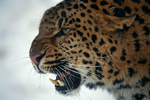
(04/09/2013) In the remote Russian far east, amid pine forests and long winters, a great cat may be beginning to make a recovery. A new survey estimates that the Amur leopard (Panthera pardus orientalis) population has risen to as many as 50 individuals. While this may not sound like much, it’s a far cry from the a population that may have fallen to just 25 animals. Sporting the heaviest coat of any leopard, the Amur leopard largely hunts hoofed animals, such as deer and boar, in a forest still ruled by the Siberian tiger.
